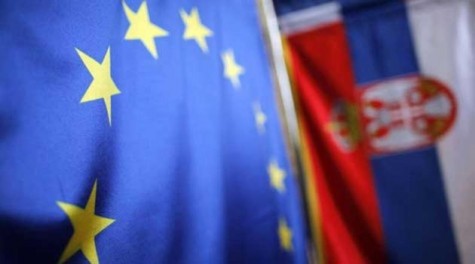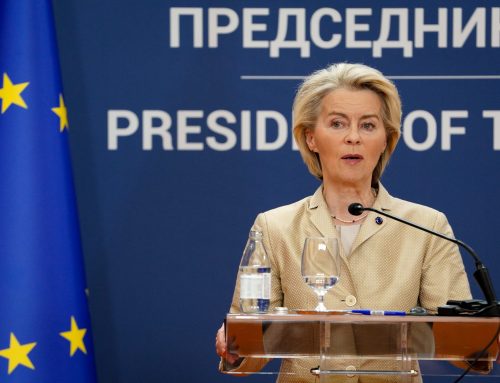In all three countries, a clear majority has positive feelings about the EU, and a vast majority of 90% even “feels” European.
Austria, Finland and Sweden became full Members of the European Union twenty years ago, in 1995. In all three countries there were different considerations leading up to the decision to apply for membership, but there was one thing in common, namely the vision to meet the challenges of the future, in an increasingly globalised world, together with a larger group of countries that share the same basic values in all different political areas. Now, after 20 years of membership in the EU, the time has come to sum up what this has meant to our three countries, and to share our experience with those countries who have chosen the same path for the future.
When Austria, Finland and Sweden joined the EU in 1995, the starting point for all three countries was similar: Until 1989, we had been in the periphery of “Western Europe”. With the fall of the Iron Curtain in 1989, this situation changed completely. Borders with our Eastern neighbours opened up, new opportunities arose. Austrian, Finnish and Swedish citizens were ready to grasp these new opportunities and voted with absolute majority for joining the European Family.
Did EU membership fulfil the expectations of our citizens? If we look at recent opinion polls that were carried out by the European Commission, the answer appears to be yes: in all three countries, a clear majority has positive feelings about the EU, and a vast majority of almost 90% even “feels” European. Of course, there are also many citizens who are dissatisfied with aspects of European integration, e.g. the feeling that the EU delivers more to big enterprises than to the social needs of citizens, or that Europe does too little in areas such as foreign policy or migration. It is clear that Europe will have to tackle these challenges, and indeed we are working on that.
But what is it that makes the European project so attractive to our citizens, despite certain criticisms? Besides the factor of feeling European, it is clear that the European Union has concrete advantages for all citizens. Let’s break down the advantages in three groups:
Peace and stability: The most important aspect of European integration is peace. Peace is not just the absence of war, but a virtue which has to be nourished by justice and faithful cooperation, and this is exactly what the European Union as a community of law and cooperation is about. For many Europeans this advantage seems self-evident and is therefore often not talked about. However, if we only look to the many conflict areas around the world, we can recognise the immeasurable advantage which the European peace project brings about.
Growth and development: The EU was expected to foster growth in our countries, and indeed it did. In Austria, a recent study has shown that GDP growth has been almost 1 percent per year higher and unemployment 0.7% lower than without accession. In Sweden, real earnings have increased by no less than 44 per cent, and Sweden’s foreign trade has grown more rapidly than anyone could have foreseen. And Finland, which had been in deep recession in the early 1990s, recovered quickly after EU accession and moved up from being a European ‘Top 30’ to a ‘Top 3’ country over the span of 25 years in key areas such as education, innovation and competitiveness.
Freedom and opportunities: In order to ensure peace and foster growth, the European Union has also increased freedom between our countries enormously. Freedom of movement and free flow of goods has brought great opportunities to all Austrians, Finns and Swedes. Not only can they look for work everywhere in Europe but freedom also applies for students – thanks to the student exchange programme Erasmus, some 200.000 students from our three countries have studied somewhere else in Europe. And besides people, freedom of movement also applies to goods. Thanks to common rules, producers in our countries can sell their goods everywhere on the common market, and consumers can choose where to purchase their goods. In all three countries, the export rate has increased drastically.
Since our accession, the EU has continued to grow, and 12 countries of East, Central, South and South Eastern Europe have joined the Union. With the accession of Croatia last year, the EU gave a clear proof on its commitment to support the European perspective of all countries of the Western Balkans. Today, Serbia is a candidate country, and accession negotiations started in January 2014. Of course, it is not an easy task to take over the rules and standards of the European Union, this is an experience which Austria, Finland and Sweden also had. It requires reforms not only of the laws, but also of legal and political practice. Serbia is on a good track, , and we stand ready to help Serbia on its way to become a member of the EU.
It is a very positive fact that all countries of the Western Balkans, including Serbia, seek to join forces in the European framework. Let us continue on this way together, and let’s make the next 20 years a successful time not only for Austria, Finland and Sweden, but also for Serbia and its neighbours.
Sebastian Kurz, Minister for Foreign Affairs of Austria
Erkki Tuomioja, Minister for Foreign Affairs of Finland
Margot Wallström, Minister for Foreign Affairs of Sweden
Source: politika.rs




